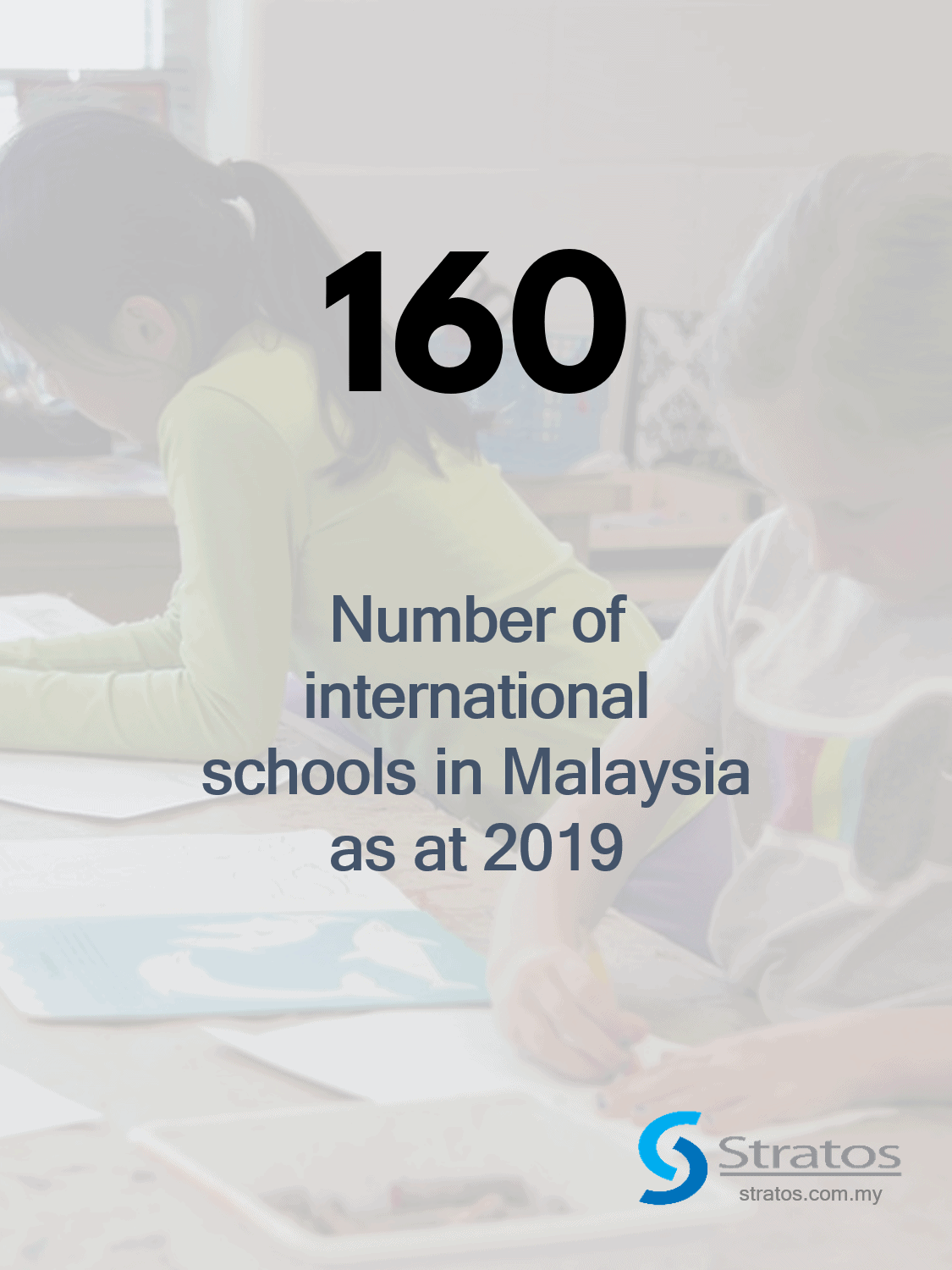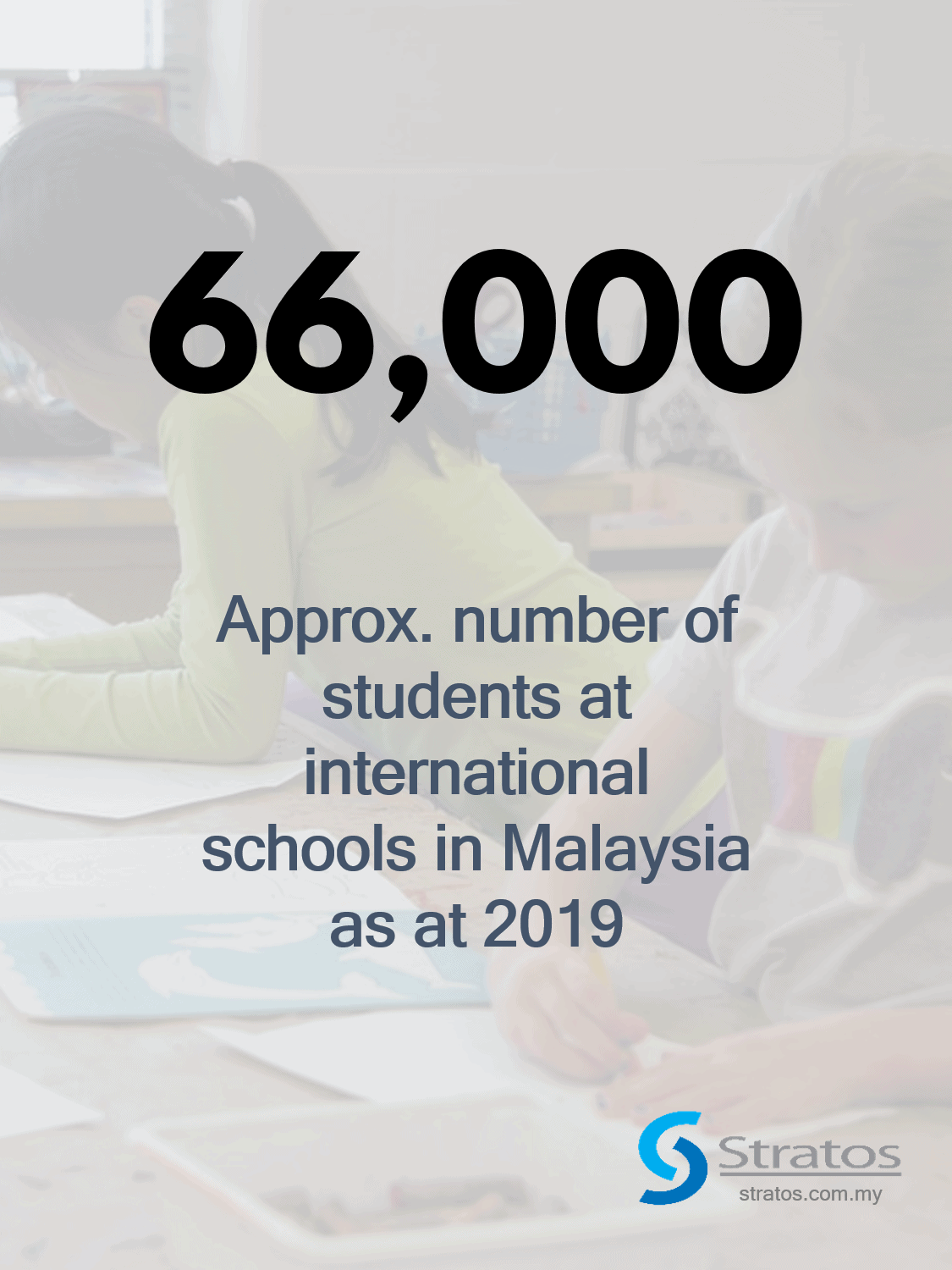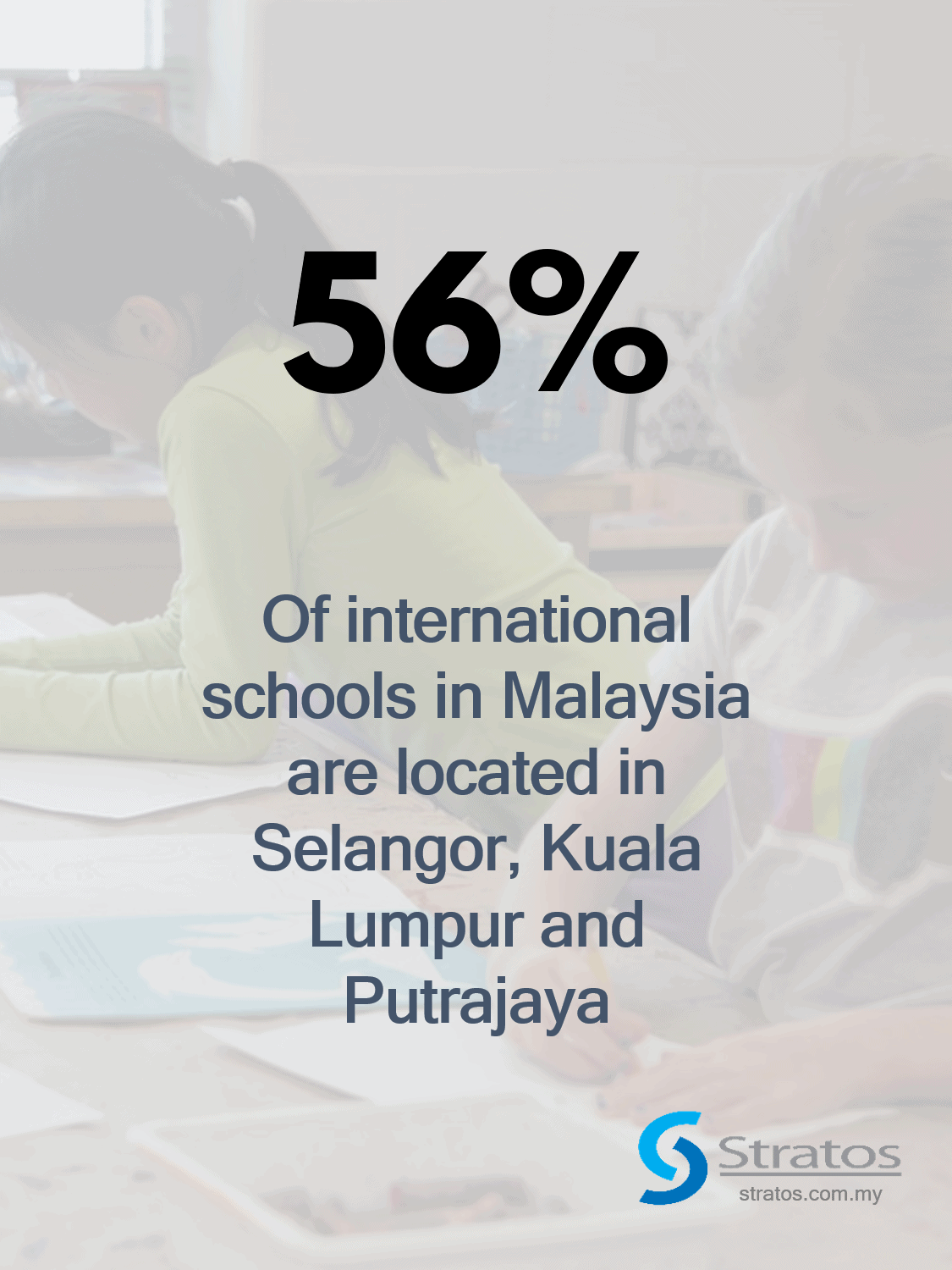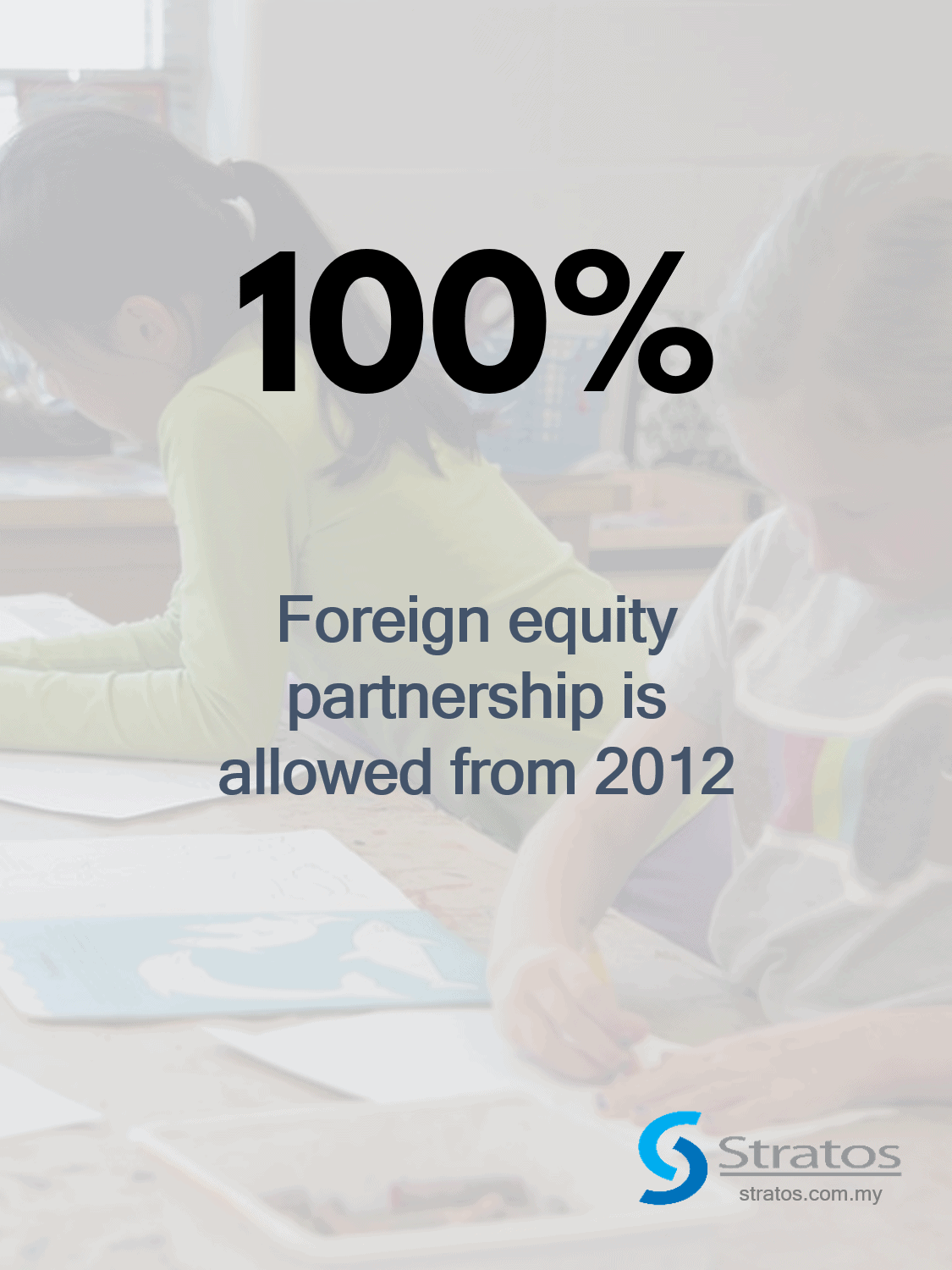International Schools in Malaysia - FULL Report
June 2020
NOTE : There are two versions of the report – Mini Report & Full Report, each priced differently. As the name suggests, the mini report contains only selective sections of the full report.
RM15,000 RM9,999








TABLE OF CONTENTS
Offers a brief history and evolution of international schools in Malaysia
Discusses Malaysia’s economic standing in terms of its gross domestic product (GDP), as well as policies and guidelines surrounding the establishment of international schools in the country.
Figure 2.1: Malaysia’s GDP (in billion) at 2010 constant prices – Source: BNM
Figure 2.2: GDP growth rate – Source: BNM
Provides Malaysia’s population growth and forecast.
Figure 3.1: Map of Malaysia – Source: Google Maps & Stratos Consulting Group
Figure 3.2: Population (in million) – Source: DOSM
Figure 3.3: Population growth rate – Source: DOSM
Figure 3.4: Total population (in million) of those aged 0-19 years old – Source: DOSM
Figure 3.5: Percentage of population aged 0-19 years old – Source: DOSM
Details the definition of private schools in Malaysia as classified by the Ministry of Education (MOE).
Number & Enrolment – examines growth trends in terms of number and enrolment.
Figure 5.1: International Schools in Malaysia
Figure 5.2: Percentage change in the international schools in Malaysia
Figure 5.3: International schools by state in Malaysia in 2019
Figure 5.4: Percentage distribution of tiers-1, 2 and 3 international schools in Malaysia
Figure 5.5: Enrolment (in thousand) in international Schools in Malaysia
Figure 5.6: Percentage change in enrolment in international schools in Malaysia
Figure 5.7: Average enrolment in international schools in Malaysia
Figure 5.8: Percentage change in average enrolment in international schools in Malaysia
Figure 5.9: Private schools in Malaysia
Figure 5.10: Percentage change in the number of private schools in Malaysia
Figure 5.11: Private schools by state in Malaysia in 2019
Figure 5.12: Enrolment (in thousand) in private schools in Malaysia
Figure 5.13: Percentage change in enrolment in private schools in Malaysia
Figure 5.14: Average enrolment in private schools in Malaysia
Figure 5.15: Percentage change in average enrolment in private schools in Malaysia
Estimates the projected market size and analyses household income trends as well as its outlook in the country.
Figure 6.1: Mean monthly gross income (RM) of households in Malaysia
Table 6.1: Percentage change (compound annual growth rate; CAGR) in mean monthly gross
income (RM) of households in Malaysia
Figure 6.2: Mean monthly gross income (RM) of households by state in Malaysia
Figure 6.3: Number of households (in thousand) by state in Malaysia in 2016
Figure 6.4: Percentage of households by monthly gross income in Malaysia
Table 6.2: Estimated market size for international schools in Malaysia in 2016
Table 6.3: Principal statistics of primary education services (private)
Table 6.4: Principal statistics of secondary education services (private)
Presents an overview of the latest financial results of selected international schools in Malaysia, as well as ownership changes following divestment and acquisition of international schools in the country.
Table 7.1: – General overview of the latest financial results and ratios of selected international
schools in Malaysia.
Describes the overall outlook of the international school market in the country.
Presents profiles of selected international schools in the country.
Table 9.1: – Profit & loss statement of Garden International School (GIS)
Table 9.2: – Balance sheet of Garden International School (GIS)
Table 9.3: – Latest financial ratios of Garden International School (GIS)
Table 9.4: – Profit & loss statement of Tenby International School (TIS), Setia Eco Park
Table 9.5: – Balance sheet of Tenby International School (TIS), Setia Eco Park
Table 9.6: – Latest financial ratios of Tenby International School (TIS), Setia Eco Park
Table 9.7: – Profit & loss statement of Marlborough College Malaysia (MCM)
Table 9.8: – Balance sheet of Marlborough College Malaysia (MCM)
Table 9.9: – Latest financial ratios of Marlborough College Malaysia (MCM)
Table 9.10: – Profit & loss statement of Austin Heights International School (AHIS)
Table 9.11: – Balance sheet of Austin Heights International School (AHIS)
Table 9.12: – Latest financial ratios of Austin Heights International School (AHIS)
Table 9.13: – Profit & loss statement of Prince of Wales International School (POWIS)
Table 9.14: – Balance sheet of Prince of Wales International School (POWIS)
Table 9.15: – Latest financial ratios of Prince of Wales International School (POWIS)
Table 9.16: – Profit & loss statement of Pelita International School (PIS)
Table 9.17: – Balance sheet of Pelita International School (PIS)
Table 9.18: – Latest financial ratios of Pelita International School (PIS)
Table 9.19: – Profit & loss statement of Fairview International School (FIS), Perak
Table 9.20: – Balance sheet of Fairview International School (FIS), Perak
Table 9.21: – Latest financial ratios of Fairview International School (FIS), Perak
Includes listing of international schools in the country.
 If you purchase this report before 30 September 2020, you will receive the full year updates for 2020 on income (for full report only) and number of international schools in the country (for mini and full reports) for FREE!
If you purchase this report before 30 September 2020, you will receive the full year updates for 2020 on income (for full report only) and number of international schools in the country (for mini and full reports) for FREE!
EXECUTIVE SUMMARY
International schools in Malaysia were first established to cater to the needs of expatriates’ children. However, schools that were outright exclusive for this community have changed in recent years. This is stemming from the desire of Malaysian parents wanting their children to experience English-medium education in the country. The substantial increase of international schools is further compounded by the removal of 40% Malaysian student quota by the government in 2012, in support of its Economic Transformation Program (ETP) that was launched in 2010. Scaling up international schools in the country was one of the key projects outlined in ETP.
However, the increased number of international schools has resulted in a subdued growth of average student enrolment per school. This implies that some schools are operating below capacity, thus impacting its financial performance. This report presents an overview of the international school market in Malaysia, by providing a more in-depth discussion on its classification and growth trend, as well as examining the demographics and income trends in the country. Profile of selected international schools including its financial performance are also presented, in addition to a full international school directory. There are two versions of the report – Mini Report & Full Report, each priced differently. As the name suggests, the mini report contains only selective sections of the full report.
The report will be emailed once proof of purchase is received.
Find out more about the International School Mini Report June 2020 >>
Looking for more customised reports?
Connect with us. We practice flexibility while still providing quality analysis to help with your business and investment decisions.